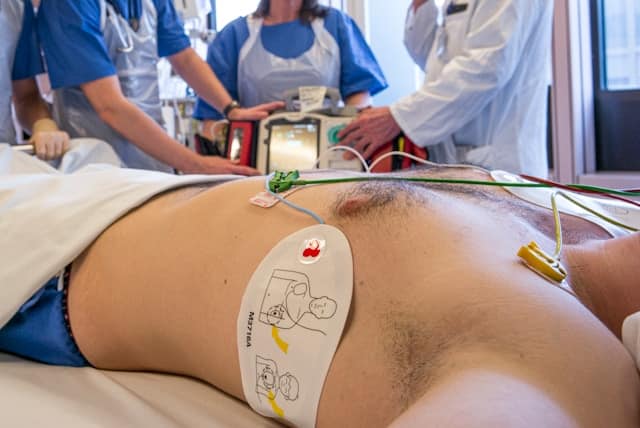What’s the Ideal Setup for an At-Home Dialysis Patient to Ensure Comfort and Accessibility?

In an era where the intersection of healthcare and technology is more prevalent than ever, at-home dialysis has become a viable treatment option for many patients with kidney disease. This form of treatment brings the dialysis center to the comfort of the patient’s home, offering them a greater sense of control over their health and lifestyle. While home hemodialysis (HHD) and peritoneal dialysis are not new concepts, advancements in technology and training programs have led to a resurgence in their popularity and acceptance. This article will delve into the ideal setup for at-home dialysis to ensure comfort and accessibility for patients.
Understanding Home Dialysis
Home dialysis, whether it be hemodialysis or peritoneal, requires a certain level of patient participation and involvement, driving the need for an optimal home setup. According to scholar.google, a well-conceived home dialysis setup can increase treatment effectiveness, minimize potential complications, and enhance patient safety and comfort.
A lire également : What Are the Most Efficient Solar Panel Options for a Small Urban Roof?
The first step to a successful home dialysis setup is understanding the basics of the treatment. Hemodialysis works by circulating the patient’s blood outside the body through a machine that cleans it before returning it back to the body. This process requires vascular access, generally in the arm, which needs to be kept clean and free from infection.
On the other hand, peritoneal dialysis uses the patient’s peritoneum in their abdomen as a natural filter. A catheter is inserted into the abdomen, and a dialysate solution is infused and drained multiple times a day, removing waste and excess fluid.
A lire également : What’s the Best Technique for Cultivating an Indoor Bonsai Tree Display?
Setting Up the Physical Space for Home Dialysis
Once you understand the basic requirements for dialysis treatment, the next step is to prepare the physical space at home. According to PubMed, an ideal home dialysis space should be clean, well-lit, and spacious enough to comfortably accommodate the patient, their equipment, and a caregiver if needed.
For HHD, the machine itself needs a stable, flat surface close to an electrical outlet. It’s recommended to have a comfortable chair or bed nearby where the patient can sit or lay during treatment. Make sure the chair is adjustable, allowing the patient to change positions as needed.
In the case of peritoneal dialysis, you’ll need an area for storing supplies such as dialysate bags, catheter supplies, and other necessary items. This area should be kept clean and organized at all times.
Training for Home Dialysis
Proper training for home dialysis is one of the most crucial elements to ensure successful treatment. Most dialysis centers offer a comprehensive training program for patients and their caregivers.
Training includes understanding the dialysis process, learning how to operate and troubleshoot the dialysis machine, recognizing and responding to potential complications, and learning how to care for the access site. Google Scholar indicates that patients who undergo thorough training tend to have a smoother transition to home dialysis and experience fewer complications.
Accessing Support and Resources
Even with proper training and an optimal home setup, it’s important to have access to support and resources. Many dialysis centers offer 24/7 assistance to address your concerns and help troubleshoot any problems that arise. You can also participate in community forums or support groups where you can connect with other home dialysis patients and share experiences and tips.
Another important resource is access to telemedicine. With the advancement of technology, many healthcare providers now offer virtual consultations, allowing patients to receive medical advice and support without needing to leave their home. This can be particularly beneficial for home dialysis patients who may need frequent check-ins with their healthcare team.
Managing Time and Lifestyle
Finally, successful home dialysis also involves managing your time and lifestyle. Dialysis treatments can take several hours a day, several days a week. Therefore, having a consistent schedule can help ensure that treatments are never missed.
However, home dialysis does offer more flexibility than in-center dialysis, allowing patients to schedule treatments around their personal and work obligations. Remember, maintaining a balanced diet and lifestyle are also crucial parts of managing kidney disease and undergoing dialysis treatments. Seek advice from a dietitian and be consistent in your exercise regime to maintain your overall health.
At-home dialysis has allowed many patients to take an active role in their care, providing a sense of autonomy and control. With the right setup, training, support, and lifestyle management, home dialysis can become a practical and comfortable treatment option for kidney disease.
Ensuring Patient Safety and Comfort
Ensuring patient safety and comfort is paramount to conducting successful home dialysis treatments. PubMed Google suggests that a safe and comfortable environment helps promote better patient engagement and better overall results from treatments.
When setting up the physical space for home dialysis, consider factors such as noise, temperature, and privacy. The dialysis area should be as quiet as possible, with minimal distractions, to allow the patient to relax during the treatment. The room temperature should be comfortable – not too hot or too cold – as temperature extremes can affect the dialysis process.
Additionally, dialysis patients should have a degree of privacy during their treatments. If possible, the dialysis area should be in a room with a door that can be closed.
Emphasize cleanliness to prevent infections. Both hemodialysis and peritoneal dialysis require a sterile environment to prevent the possibility of infection. This means ensuring the dialysis area and all equipment are cleaned and disinfected regularly.
For patient comfort, consider adding items such as a television, radio, or bookshelf in the dialysis area. These items can provide entertainment and distraction during the hours-long treatments. Remember, the goal is to make the dialysis experience as comfortable and accommodating as possible for the patient.
Advanced Technology and Tools
As technology continues to evolve, advanced tools and equipment are becoming increasingly available to aid in home dialysis treatment. According to Google Scholar, innovations such as remote patient monitoring and smart dialysis machines have improved the efficiency and safety of home dialysis treatments.
Remote patient monitoring allows healthcare providers to monitor patients’ vital signs and treatment progress from a distance. This technology can alert healthcare providers to potential problems before they become critical, thus enhancing patient safety.
Smart dialysis machines have made it easier for patients and their care partners to administer treatments. These machines come with easy-to-use interfaces and automated features that reduce the chance of error during treatments.
Additionally, mobile apps and online resources have become handy tools for tracking treatment progress, scheduling appointments, and communicating with healthcare providers. These digital tools can help patients manage their treatments more effectively and stay connected with their healthcare team.
In Conclusion
In the world of kidney disease treatment, home dialysis has emerged as a viable, and often preferable, alternative to in-center dialysis. The benefits of home dialysis are many, including greater flexibility and control over treatments, improved quality of life, and the comfort of receiving treatment in a familiar environment.
To ensure the success of home dialysis treatments, it’s essential to have a well-planned setup, proper training, access to support and resources, and advanced technology and tools.
This article has provided insights into a holistic approach to setting up home dialysis. However, it’s crucial to remember that every patient’s situation is unique, and what works best for one patient may not work for another. Thus, it’s always advisable to seek professional advice and guidance when setting up home dialysis.
With the right preparation and the right support, home dialysis can be a transformative experience for dialysis patients. It can empower them to take control of their health care and live a more comfortable and fulfilling life, even with kidney disease.
